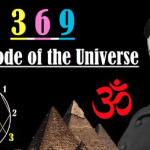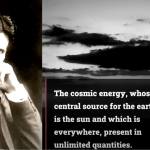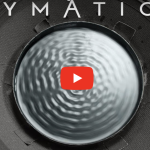Flat Earth Theory: A Comprehensive Analysis of the Spherical Model’s Flaws
The Flat Earth Theory has been a topic of contention for many years. The concept that the earth is not a spinning globe but is, instead, a flat plane has been met with skepticism and ridicule by the majority of people who have heard of it. However, proponents of the Flat Earth Theory argue that the evidence is inconsistent with the spherical model. In this article, we will delve into the Flat Earth Theory, examine some of the claims made by its proponents, and determine whether there is any merit to their arguments as we explore debunking the spherical model. We encourage you to watch the video mentioned in this article to gain a better understanding of the topic.
The Horizon and the Pythagorean Theorem
One of the key arguments made by proponents of the Flat Earth Theory is that the horizon always rises to the observer’s eyes no matter where they are. For example, when observing Toronto’s skyline from Niagara-on-the-Lake (31 miles away), Chicago’s skyline from Union Pier (43 miles away), or even Oahu from Kawaii (73 miles away), no curvature is visible where it is supposed to be. According to the Pythagorean theorem, which states that the curvature of the earth is 8 inches per mile squared, Oahu should not be visible at all.
But does this mean that the earth is indeed flat? Critics argue that atmospheric refraction, the bending of light as it passes through the earth’s atmosphere, can account for the seemingly flat appearance of the horizon in these cases. Additionally, our eyes and brains have limited perception and may not be able to detect subtle curvature at such distances.
The Michelson-Morley Experiment and the Theory of Relativity
In 1887, Albert Michelson and Edward Morley conducted an experiment that attempted to prove the speculated motion of the Earth around the sun. However, when the experiment failed, Albert Einstein was forced to form the theory of relativity to overcome this problem. Proponents of the Flat Earth Theory argue that this is an example of mainstream science creating a workaround when faced with undesirable results, which is not real science.
Yet, the theory of relativity has been widely accepted by the scientific community and has withstood numerous tests and experiments over the years. While the Michelson-Morley experiment may have spurred the development of the theory of relativity, it does not necessarily negate the spherical model of the earth.
The Sun and Moon Phases
The sun is claimed to be 93 million miles away with a radius of over 400,000 miles. However, proponents of the Flat Earth Theory argue that this can be easily proven to be false by tracing the crepuscular rays back to their origin in the sky. If the sun were indeed 93 million miles away, it would be impossible to have angled sun rays, as they should all consistently come in straight. The theory also argues that the shadow of the earth does not cause moon phases and that the eight phases of the moon are always the same, but if we were orbiting around the sun, these phases would be reversed from the summer to winter seasons.
While these arguments may seem compelling, there are alternative explanations that support the spherical model. For example, crepuscular rays appear angled due to perspective and atmospheric scattering, not because the sun is closer than we think. Additionally, the phases of the moon can be accurately explained by the relative positions of the earth, moon, and sun in the context of a spherical earth.
In Conclusion
The Flat Earth Theory may seem ridiculous to many, but proponents argue that this is only because we are taught the false globe model from a young age. They say that after conducting unbiased and scientific research, they have concluded that the earth is flat. However, the arguments presented by Flat Earth theorists often have alternative explanations that support the widely accepted spherical model of the Earth.
As you delve deeper into the Flat Earth Theory and examine the evidence, we encourage you to watch the video mentioned in this article to gain a better understanding of the topic. Keep an open mind and critically evaluate the evidence presented by both sides of the argument before drawing your conclusions.
The Importance of Skepticism and Critical Thinking
It is essential to approach any controversial topic with skepticism and critical thinking. The Flat Earth Theory serves as a reminder that questioning commonly held beliefs can lead to a deeper understanding of the world around us, even if the final conclusion supports the established consensus. By engaging with alternative theories and examining the evidence, we can foster intellectual growth and develop our understanding of the world.





















